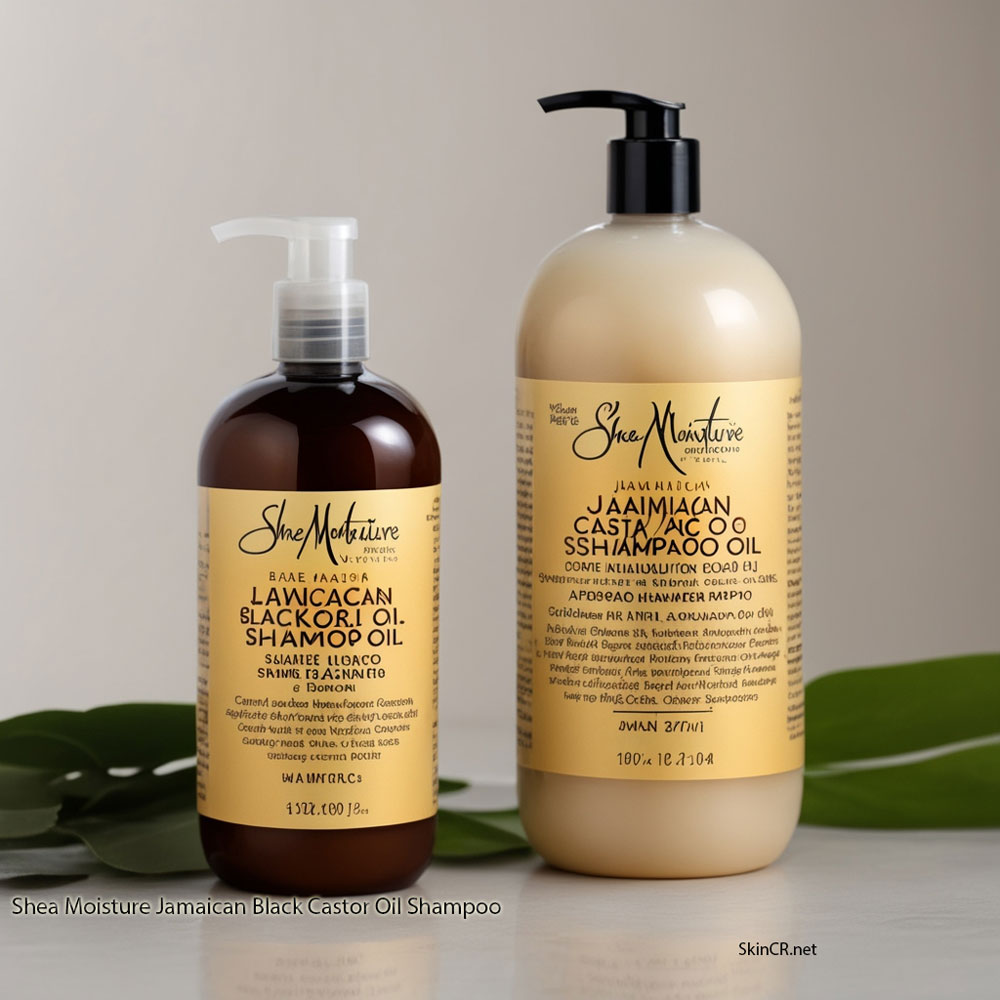Rosacea is a common skin condition that affects millions of people worldwide. Characterized by persistent redness, visible blood vessels, and often accompanied by bumps or pustules, rosacea can be frustrating and challenging to manage. However, with the right skin care regimen, you can significantly improve your skin’s condition and reduce the symptoms associated with rosacea.
In this comprehensive guide, we will delve into the world of rosacea and discuss the best practices for creating a skincare regimen that can help you manage and alleviate the symptoms of this condition. From gentle cleansers to soothing moisturizers and expert advice, we’ve got you covered.
Understanding Rosacea
Before we dive into the best skincare regimen for rosacea, it’s crucial to understand the condition itself. Rosacea is a chronic skin condition that primarily affects the face. Its exact cause is unknown, but it’s believed to involve a combination of genetic and environmental factors. Common symptoms of rosacea include:
- Persistent Redness: The hallmark of rosacea is persistent redness on the central part of the face, such as the cheeks, nose, forehead, and chin. This redness may come and go or be constant.
- Visible Blood Vessels: Many individuals with rosacea develop visible blood vessels, often referred to as telangiectasia, which appear as thin, red lines on the skin’s surface.
- Bumps and Pimples: Some people with rosacea experience red, pus-filled bumps similar to acne. This subtype of rosacea is called papulopustular rosacea.
- Eye Irritation: Ocular rosacea can cause dryness, itching, burning, and sensitivity in the eyes.
- Skin Thickening: In advanced cases, rosacea can lead to skin thickening, particularly on the nose. This condition is known as rhinophyma.
Now that we have a clear understanding of rosacea let’s explore the best skincare regimen to manage this condition effectively.
The Building Blocks of a Rosacea-Friendly Skincare Regimen
Building a skincare regimen for rosacea involves selecting products and practices that are gentle, soothing, and non-irritating. Here are the essential components of a rosacea-friendly skincare routine:
1. Gentle Cleansing
Cleansing is the foundation of any skincare regimen, and for individuals with rosacea, it’s essential to choose a gentle, hydrating cleanser. Look for cleansers that are:
- Soap-Free: Traditional soaps can be harsh and drying. Opt for a soap-free, non-alkaline cleanser.
- Fragrance-Free: Fragrances can be irritating to sensitive skin. Avoid products with added scents.
- Hypoallergenic: Look for cleansers labeled as hypoallergenic, which are less likely to trigger allergic reactions.
- Non-Comedogenic: Non-comedogenic cleansers won’t clog your pores, reducing the risk of breakouts.
Cleansing should be done twice a day, in the morning and evening. Use lukewarm water and your fingertips to gently cleanse your face, then pat it dry with a soft, clean towel. Avoid hot water and rough scrubbing, as they can worsen redness and irritation.
2. Soothing Toner
Toner can be a helpful addition to a rosacea skincare routine, but it’s essential to choose one that’s alcohol-free and contains soothing ingredients like chamomile, aloe vera, or cucumber extract. Apply the toner by gently patting it onto your skin with a cotton pad. This step can help balance your skin’s pH and prepare it for the next products in your regimen.
3. Gentle Exfoliation (Optional)
Exfoliation can help remove dead skin cells and improve the texture of your skin, but it’s crucial to be extremely gentle when exfoliating if you have rosacea. Over-exfoliating or using harsh exfoliants can exacerbate redness and irritation. Consider using a mild exfoliant with ingredients like lactic acid or polyhydroxy acids (PHAs) no more than once a week.
4. Treatment Serums
Serums can target specific skin concerns, and for rosacea, you’ll want to focus on products that soothe inflammation and strengthen the skin barrier. Look for serums that contain ingredients such as:
- Niacinamide: This anti-inflammatory ingredient can help reduce redness and improve the skin’s barrier function.
- Hyaluronic Acid: Hyaluronic acid is a hydrating powerhouse that can soothe and moisturize the skin.
- Green Tea Extract: Green tea is rich in antioxidants and has anti-inflammatory properties that can benefit rosacea-prone skin.
- Licorice Root Extract: Known for its calming properties, licorice root extract can help reduce redness.
- Azelaic Acid: This ingredient has anti-inflammatory and anti-bacterial properties, making it beneficial for rosacea.
Apply your chosen serum after toning and allow it to absorb fully into the skin before moving on to the next step.
5. Moisturizer
A moisturizer is a crucial step in a rosacea skincare regimen. It helps lock in hydration and prevents moisture loss, which can exacerbate redness and sensitivity. Choose a fragrance-free, non-comedogenic moisturizer that’s suitable for sensitive skin. Look for ingredients like ceramides, glycerin, or squalane, which can help soothe and hydrate the skin.
6. Sunscreen
Sunscreen is non-negotiable, regardless of your skin type or condition. UV radiation can trigger and worsen rosacea symptoms, so daily sun protection is vital. Opt for a broad-spectrum sunscreen with an SPF of 30 or higher. Physical sunscreens containing zinc oxide or titanium dioxide tend to be less irritating for rosacea-prone skin.
Apply sunscreen every morning, even on cloudy days, and reapply it every two hours when exposed to sunlight. Sun-protective clothing, sunglasses, and wide-brimmed hats can also provide additional protection.
7. Evening Routine
Your evening skincare routine should closely resemble your morning routine, with a few differences. Start by gently cleansing your face to remove makeup, dirt, and pollutants. If you wear makeup, consider using a gentle makeup remover before cleansing.
After cleansing, apply your treatment serum, followed by a nourishing and hydrating moisturizer. Some individuals with rosacea may benefit from using a thicker, occlusive moisturizer at night to lock in moisture.
8. Avoid Triggers
In addition to the products you use, it’s essential to identify and avoid triggers that can exacerbate your rosacea symptoms. Common triggers include:
- Spicy Foods: Spicy foods can cause flushing and redness in some people with rosacea.
- Alcohol: Alcohol, particularly red wine, can dilate blood vessels and worsen redness.
- Hot Beverages: Hot coffee and tea can trigger flushing in some individuals.
- Extreme Temperatures: Exposure to extreme heat or cold can aggravate rosacea.
- Stress: Stress is a common trigger for rosacea flare-ups.
- Certain Skincare Ingredients: Be cautious with skincare products containing alcohol, witch hazel, menthol, and strong acids, as they can be irritating.
By identifying and avoiding your specific triggers, you can better manage your rosacea and reduce the frequency and severity of flare-ups.
Expert Advice for Managing Rosacea
Beyond the basic skincare regimen, consider these expert tips for managing your rosacea effectively:
1. Consult a Dermatologist
If you suspect you have rosacea or are struggling to manage your symptoms, it’s essential to consult a dermatologist. A dermatologist can provide a precise diagnosis, recommend suitable treatments, and help you create a personalized skincare regimen tailored to your skin’s needs.
2. Prescription Medications
In some cases, dermatologists may prescribe medications to manage rosacea symptoms. These may include topical antibiotics, topical or oral anti-inflammatories, or medications that constrict blood vessels.
3. Patch Test New Products
When introducing new skincare products into your routine, always conduct a patch test. Apply a small amount of the product to a discreet area of your skin, such as the inside of your wrist, and wait 24 to 48 hours to check for any adverse reactions.
4. Be Patient
Improving rosacea symptoms can take time. Be patient and consistent with your skincare routine. It may take several weeks to see noticeable improvements, so don’t get discouraged.
5. Lifestyle Changes
Consider making lifestyle changes that can help manage rosacea. These may include stress reduction techniques like meditation or yoga, dietary adjustments to avoid trigger foods, and staying hydrated.
6. Professional Treatments
In addition to your skincare routine, dermatologists can offer professional treatments like laser therapy, IPL (intense pulsed light), or chemical peels to reduce redness and visible blood vessels.
Conclusion
A well-crafted skincare regimen is a cornerstone in managing rosacea. By selecting gentle, soothing products and following expert advice, you can significantly improve the health and appearance of your skin. Remember that consistency and patience are key when it comes to managing rosacea. With the right approach, you can take control of your skin and reduce the impact of this chronic skin condition on your life. Consult with a dermatologist for personalized guidance and explore the world of skincare to find what works best for your unique needs.


